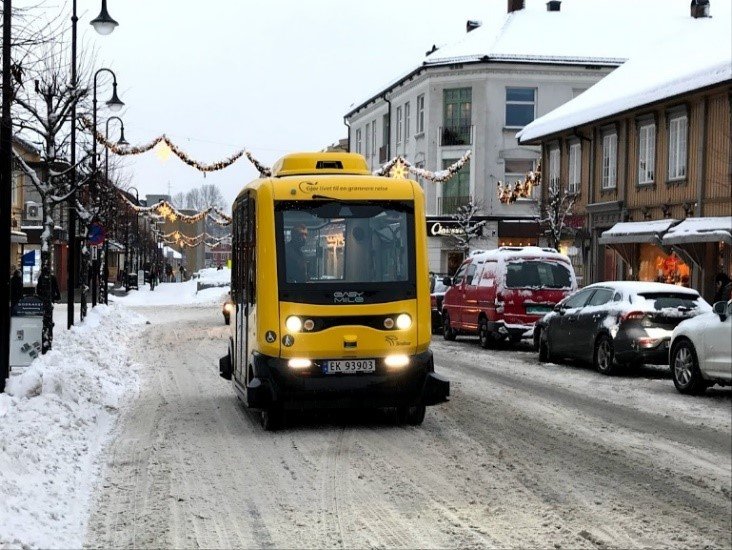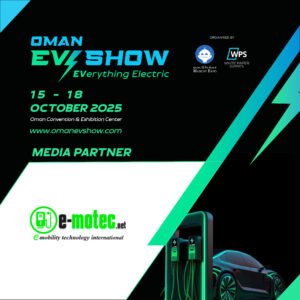We’re thinking about autonomous vehicles all wrong

When we think of future autonomous vehicles, typically an image of some kind of self-driving futuristic pod comes to mind, with a living room/bedroom/home cinema/meeting space – basically a reconfigurable interior setup. We also think of the challenges of navigating today’s complex road systems, with autonomous and human-driven cars all sharing the road, and the challenges that brings; it would only take one driver error among a fleet of self-driving cars to create havoc. Moreover, with the autonomous vehicle pretty much paying its dues in the trough of disillusionment right now, we tend toward a narrow view of the technology, that autonomous vehicles in themselves are the endgame. But if we do, we’re thinking about them all wrong. Here’s why. Thinking about an autonomous vehicle in isolation is like thinking about a car engine today without the rest of the vehicle. Forbes illustrates this broader perspective by adding smart cities into the mix: “before autonomous cars can transform modern life, cities will have to transform themselves.” Siemens also notes the advantages of autonomous vehicle technology and how cities work in the other direction: “increasing traffic volume is creating problems in cities around the world, congestion, poor air quality, and less productive economies. Connected autonomous vehicles with electric drives could offer a solution.” But let’s step back. What’s the motivation for carmakers to get involved in cities when they have their plates full with autonomous, connected and electrification R&D spending – and why would they want to? If we take Elon Musk’s famous first principle thinking guidelines, what do carmakers really care about when projecting towards 2035? The first principle they worry about how to maintain and grow their revenues. They need to make money for stockholders and investors. Their roadmap toward those future revenue streams is not just based on autonomous vehicles; it’s based on connected, autonomous, electric vehicles operating within a smart city environment and they really don’t care if that means selling trips, experiences or physical cars. What they do care about having a differentiated product, which probably means a combination of physical cars, ride sharing, trip-selling, last-mile delivery vehicles and who knows what other economic opportunities that we haven’t even thought about yet. Trip upgrades via your smartphone? Your home cinema autonomous pod sells you a movie to watch as you travel on the interstate for Thanksgiving, with the carmaker taking a cut of the revenue. Who knows? The point is, carmakers are at the center of this logic diagram, and they have to solve the problem of integrating all the moving parts – from chip to city. The autonomous vehicle is ‘only’ a building block of this transportation future, although a hugely complex one. But once we climb out of the trough of disillusionment, we need to cross the chasm of integration, bringing all of the new mobility technologies together. This chasm is the step between Level 4 and Level 5 autonomous. Once we get to full Level 5, with all road vehicles operating autonomously under all road conditions, we will have solved several challenges, including how to handle that messy time window with a mix of autonomous vehicles and human drivers; how vehicle infrastructure and vehicle-to-vehicle communications operates flawlessly; how cars integrate cleanly with other transportation modes to provide friction-less trip planning; and, how autonomous vehicles and pedestrians live together safely on our city streets. If future autonomous vehicles are a building block and not the end objective, what does this mean for the carmakers and their supply chain? It means a whole other set of parallel challenges to those outlined above. Starting at the micro level, how do they develop, protect and fully utilize intellectual property (IP) that will be the foundation of their differentiation? Things like high-level synthesis are powering the democratization of chip design for differentiated IP such as hardware accelerators for machine learning algorithms. We see carmakers already investing in this area, understanding that the integrated circuits that power the sense/compute/actuate functions in future vehicles will be a crucial advantage for product differentiation and time to market. It means the verification, validation and integration into the vehicle of embedded systems will require simulation tools and generative design methodologies for safe, secure operation. The vehicle behavior will also need to be modeled and proven robust long before taking the prototype to the testing and proving ground. And, it means that the vehicle integration into the smart city environment, and traffic modeling, fleet management and vehicle performance data will have to be managed in a cloud-based system, feeding data back to the design and manufacture sites for product optimization. And talking about manufacturing, how do we move from today’s large-scale car production toward small batch, reconfigurable, customizable vehicle interiors? How do we optimize materials flow and time, and how do we comprehend new manufacturing techniques that will become mainstream, such as additive manufacturing? So, what’s the point with all of this? There are 2 takeaways. Firstly, autonomous vehicles do not exist in a bubble. They are part of a wider transportation future that has many parts in play right now. Autonomous technology (rightly) gets a lot of media attention because it’s cool, futuristic and relatable. But we need to take a broad view when looking at how it plays into the future of mobility. Secondly, to solve the last batch of challenges outlined will require that technology companies also take a broad perspective, and ideally be invested in all these areas, playing an active part influencing standards bodies (for example, safety and security), legislature, cities, and pulling together all parts of the supply chain, from the complex integrated circuit manufacturers, through the tier 1 suppliers and the carmakers themselves, enabling IP sharing, co-development and collaboration. As we look to understand our customers’ challenges with future autonomous vehicles, we need context, broad perspective, and a deep understanding of how these often conflicting elements can come together,creating value through collaboration. Does it look daunting? From here, it just looks like the opportunity of
Automated Driverless Electric Minibuses as Part of the Public Transport Chain

Kongsberg is one of the most important industrial cities in Norway with global leading high-tech industry within industries as autonomous systems, space, maritime, subsea, defence, aviation, automotive, energy and logistics. The Kongsberg Municipality has 27 500 residents and 25 000 living in the city of Kongsberg. Kongsberg is a compact city where most people live in and around the city, mainly in small houses and detached houses. The city is divided by the river Numedalslågen. Close to the city center is the high-tech industry park with almost 7 000 employees. The region around Kongsberg has about 75 000 residents. There are people commuting to work in Kongsberg from a large region from Oslo to Porsgrunn. Work and leisure trips within Kongsberg and to and from Kongsberg take place largely by car. Internal transport in the city is supplemented with walking and cycling. Although Kongsberg is a compact city with short distances, the road structure and topography makes it unattractive to use public transport for internal transport and for work trips to and from the city. This means that there are more than 4 000 parking spaces in the technology park, and large parking facilities in the city centre. There are few passengers on the city buses and considerable potential for getting a large volume of travel to and from work in Kongsberg on the train / bus. These are common challenges in Norway and The Nordics for cities such as Kongsberg. The Kongsberg Municipality is a partner in the Interreg Sohjoa Baltic project, that researches, promotes and pilots automated driverless electric minibuses as part of the public transport chain, especially for the first/last mile connectivity. From our experiences so far we see a great potential for automated first/last mile services, but there is a need to develop further for flexibility, integrated with other transport services, and to develop sustainable business models both for service providers and users. We see also a great potential for autonomous services related to parcel and goods deliveries in the urban area, both in relation to companies and to private individuals / e-commerce. The testing that is now taking place at Kongsberg is a collaborative project between Kongsberg municipality, Applied Autonomy, Nettbuss, the Norwegian Public Roads Administration and Brakar. The bus has been in route in Kongsberg’s streets from 13 October. The plan is to continue in May this year. The bus runs a pre-programmed route and stops at stops along the route where passengers can get on and off. During testing, there is always a host on board that can override the automatic operation. – We drive in narrow streets with street parking and goods delivery. There are busy streets, I think it has exceeded all expectations, says Madland. For Madland, the link between industry and sustainability is important. – It is the next generation transport system we are working on here, in a very, very early phase. This is not just a technological thing, this is the start of the reorganization of a transport system which today is very much based on people in private cars, which will not be sustainable in the 2035 perspective. We must find new solutions, otherwise it will be impossible for people in the buildings, he says. – The bus is part of a project in a larger project portfolio during a collaboration. We have projects on operation and maintenance, on goods delivery and bus. We try to look at these a little bit towards how to look at cities and sustainable mobility. No one could do this project alone. It is that we do it jointly, which means that we get so good results. Applied Autonomy delivers knowledge, solutions and services for autonomous transportation. The company offers services for operation and implementation of pilots, tests and operations of autonomous vehicles. In accordance, Applied Autonomy develops necessary control systems that will help implementing autonomous traffic for the future. Applied Autonomy develops necessary control systems that will ensure safe implementation of autonomous vehicles in public traffic. This secures Applied Autonomy’s customers a unique position and helps them to be at the forefront within autonomous transportation.





